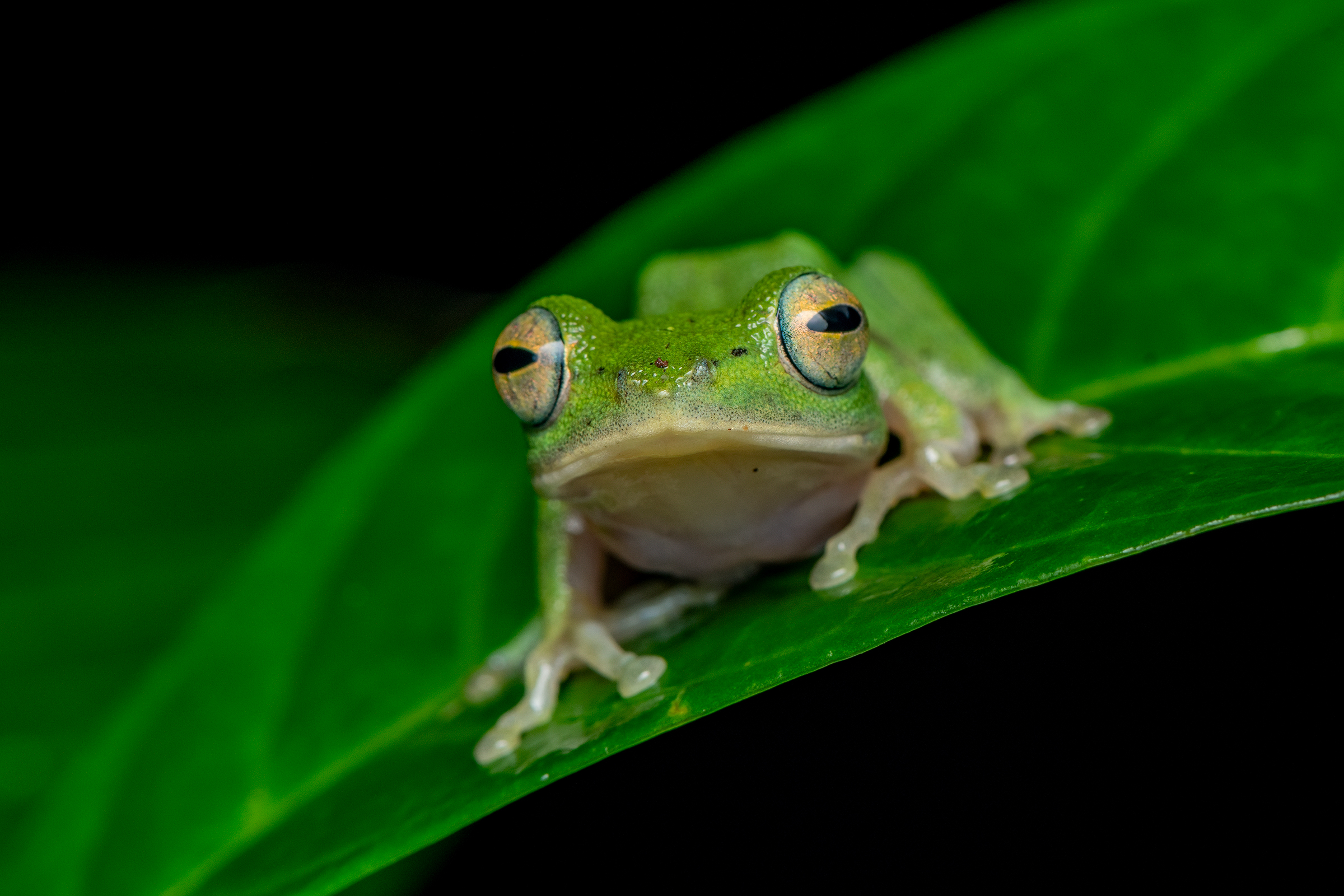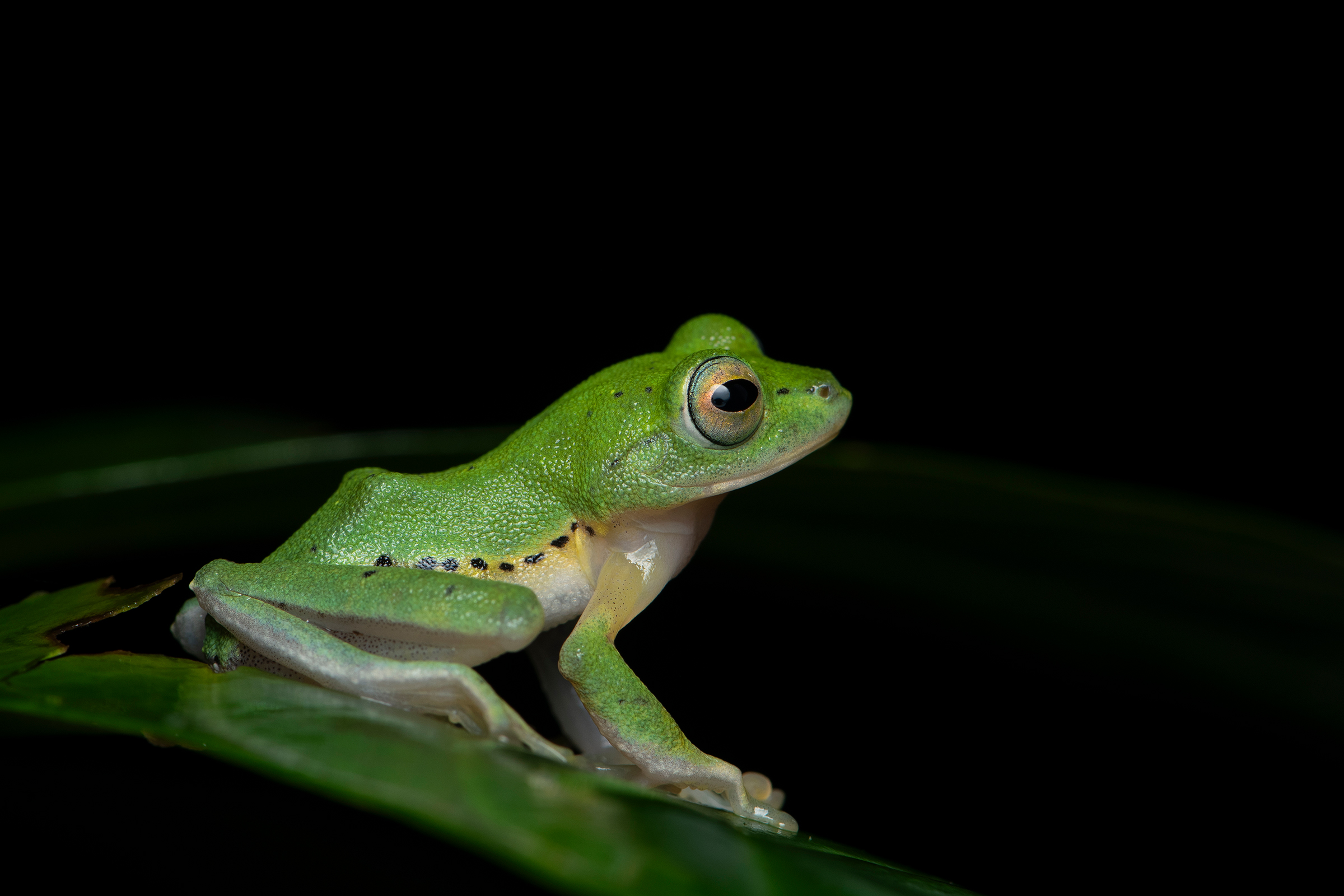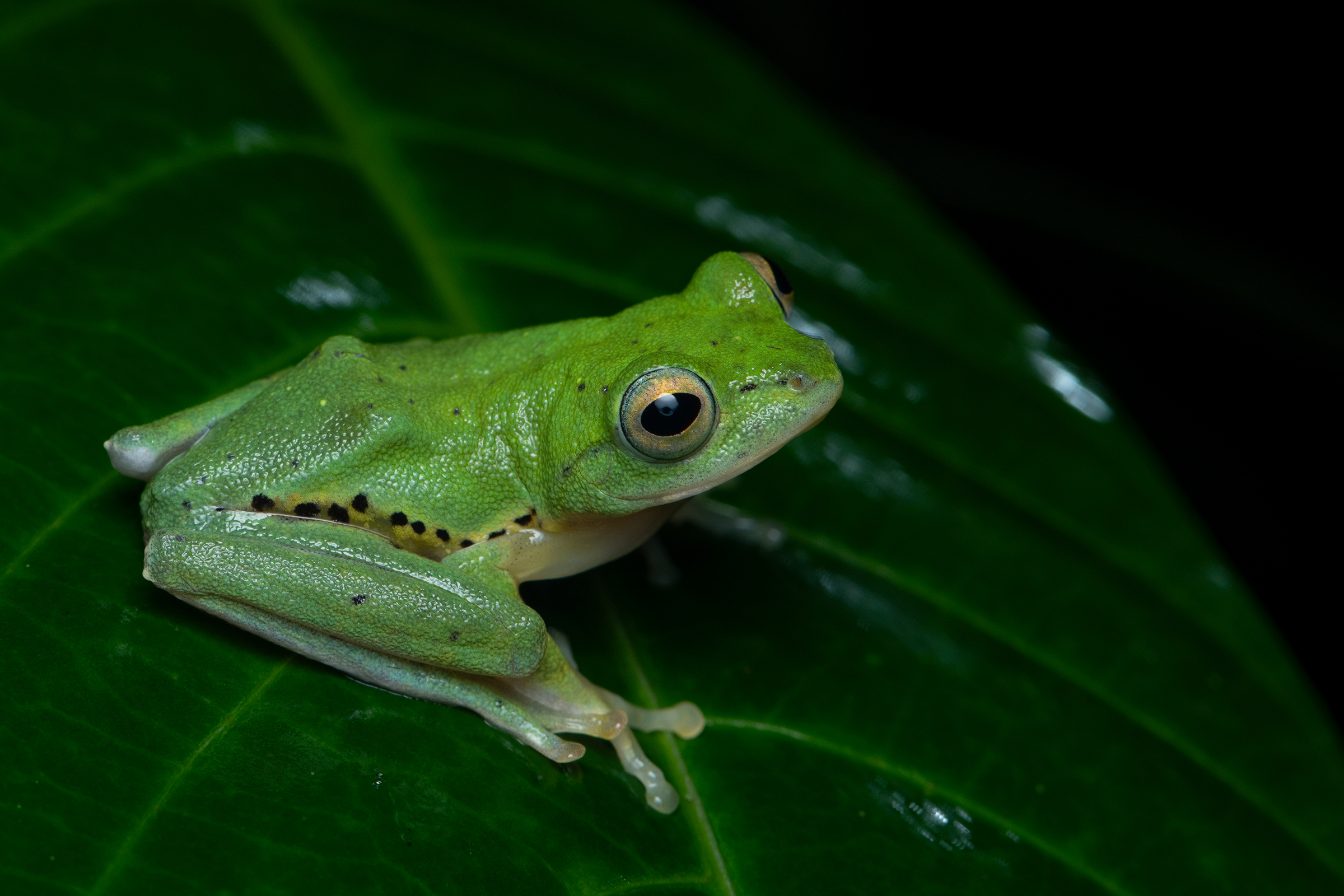On the foothills of the Western Ghats, in the year 2012-2013, scientists described a curious little frog that had remained hidden from the world from ARIPPA – a small patch of Myristica forest patch in the kulathupuzha range of Kollam district in Kerala.
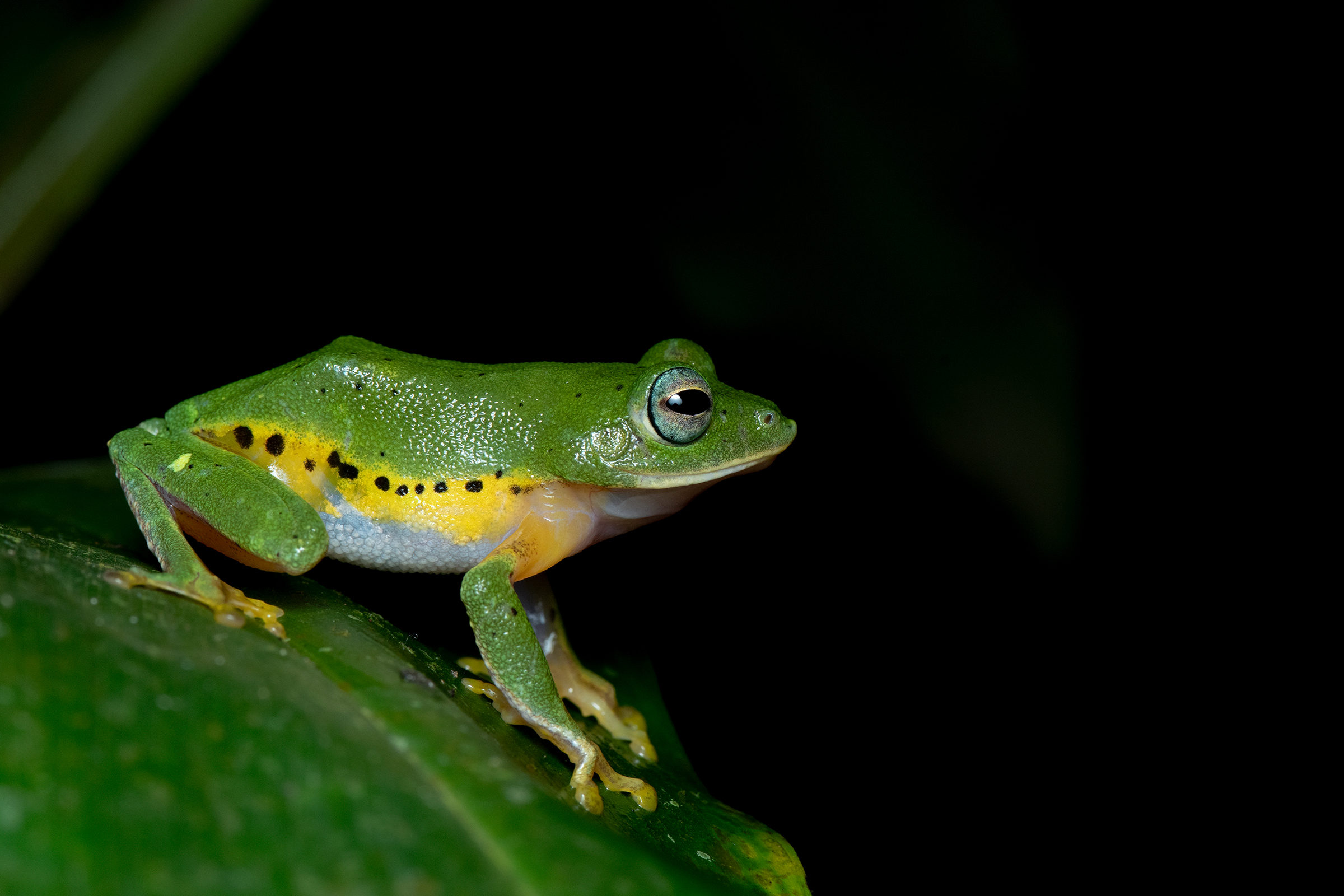
Mercurana treefrogs has carved out a life in the rarest and ancient forest ecosystems in India the Myristica swamp forests remain moist throughout the year and are filled with nutmeg-family trees with thick roots.
What makes these swamp special is its waterlogged soil with constant flooding, along with thick layers of fallen leaves and pools of dark, still water. The tall Myristica trees rise above, their roots forming buttresses and tangled masses.
These conditions are perfect for Mercurana species, that prefer a cool, damp, and quiet world. these frogs are swamp specialists through and through.
Mercurana myristicapalustris, is a treefrog that belongs to the family Rhacophoridae and the only species in its genus, Mercurana.
The frog is small adult males measure about 3.5 to 4 cm in snout-vent length, while females can grow up to 6.5 cm. They have large toe pads and long limbs, perfect for climbing in the slippery swamp vegetation. Their toes are about 75% webbed, which helps them navigate both trees and water. The tips of its fingers and toes have well-developed round pads, useful for gripping onto leaves and branches. Its skin has small, raised bumps called tubercles, especially noticeable on the limbs.
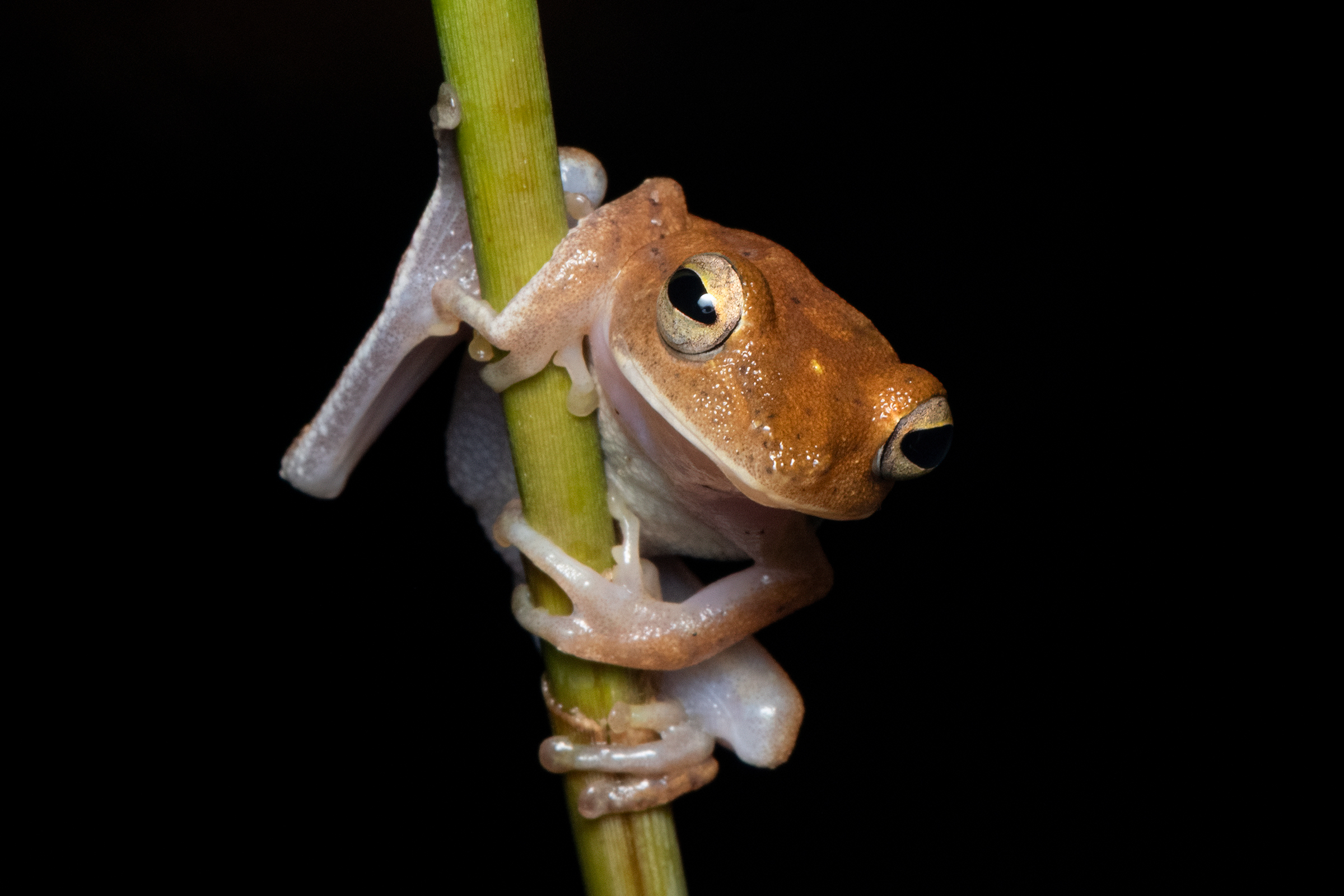
The scientific name Mercurana myristicapalustris carries a meaningful tribute and a message about the frog’s unique home. The genus name, Mercurana, blends “Mercury” in honour of Freddie Mercury, the legendary lead singer of the rock band Queen with “Rana,” a Latin word commonly used in the names of frogs.
The species name, myristicapalustris, comes from “Myristica,” the nutmeg tree family that dominates the frog’s swampy habitat, and “palustris,” a Latin word meaning “swampy.” Together, the name highlights the frog’s close connection to the rare and fragile Myristica swamp forests of the Western Ghats one of the most threatened ecosystems in India.

When the pre-monsoon rains begin usually in April and May M. myristicapalustris begins its breeding season. Males become vocal, climbing onto low branches and calling to attract females. Their calls are rhythmic and soft, suited to the thick vegetation and damp air. Sometimes, males even fight over the best calling spots.
Once a female chooses a mate, something remarkable happens. The pair climbs down to the forest floor, where the female digs a shallow pit in the wet, muddy leaf litter. There, she lays a clutch of eggs, unpigmented and jelly-like, and covers them with mud. The male guards the site briefly before disappearing back into the trees.
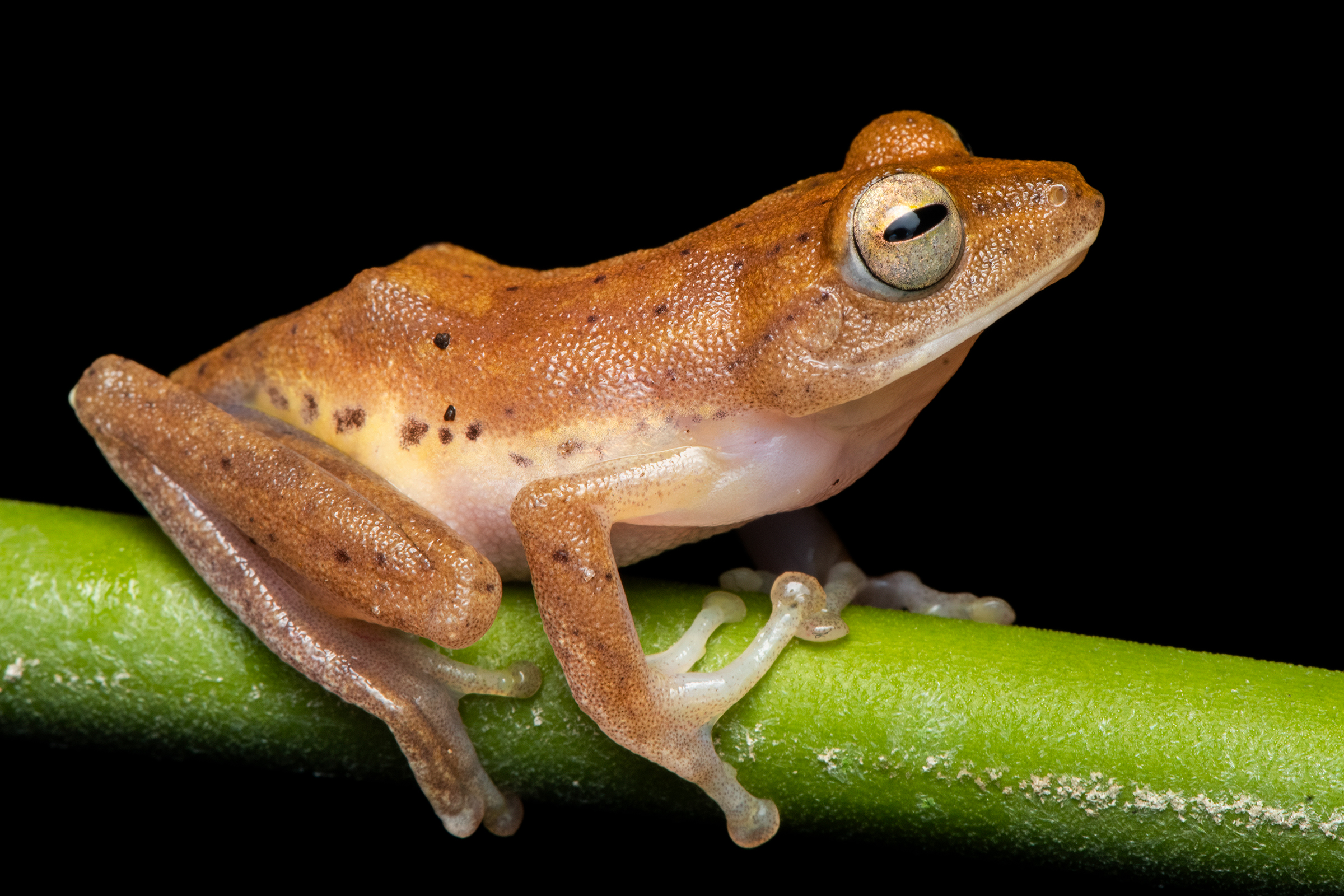
About a week later, the first heavy rains of the monsoon arrive. These rains flood the swamp, washing the tadpoles out of their underground nest and into nearby pools. Here, they swim freely, feeding and growing until they transform into froglets and climb into the trees.
This breeding method laying eggs in the mud before the rains, then letting nature do the rest is perfectly suited to the unpredictable swamp environment. It is a delicate life timed to the rhythm of the monsoon.
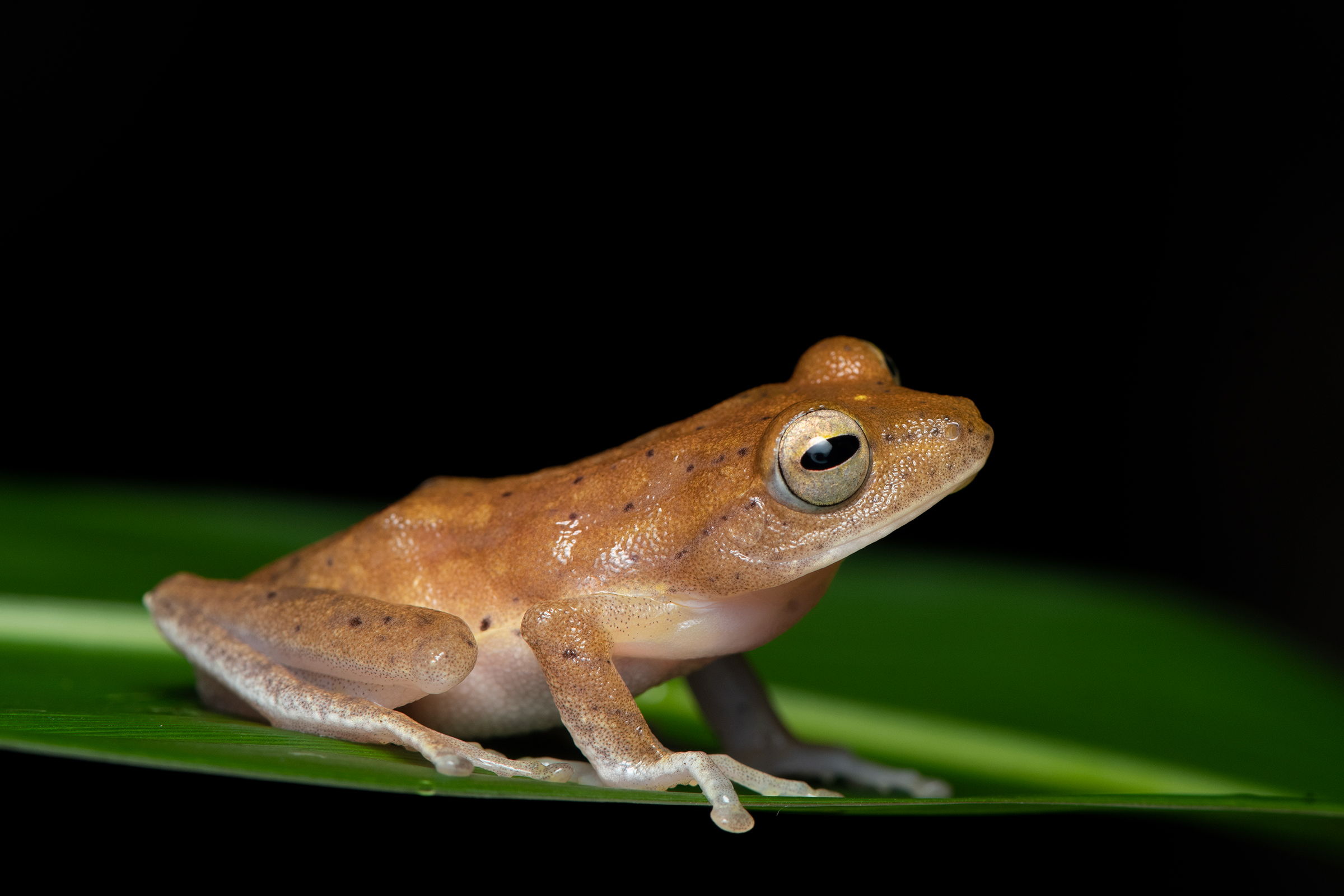
Quiet Life in the Trees
Outside the breeding season, M. myristicapalustris lives a mostly quiet, arboreal life, meaning it spends its time in trees and shrubs. It hunts at night, feeding on small insects like ants, beetles, and flies. It uses a sit-and-wait strategy, staying still and striking quickly when prey comes near.
Because this frog is small, shy, and lives in such hard-to-reach places, it is very rarely seen.
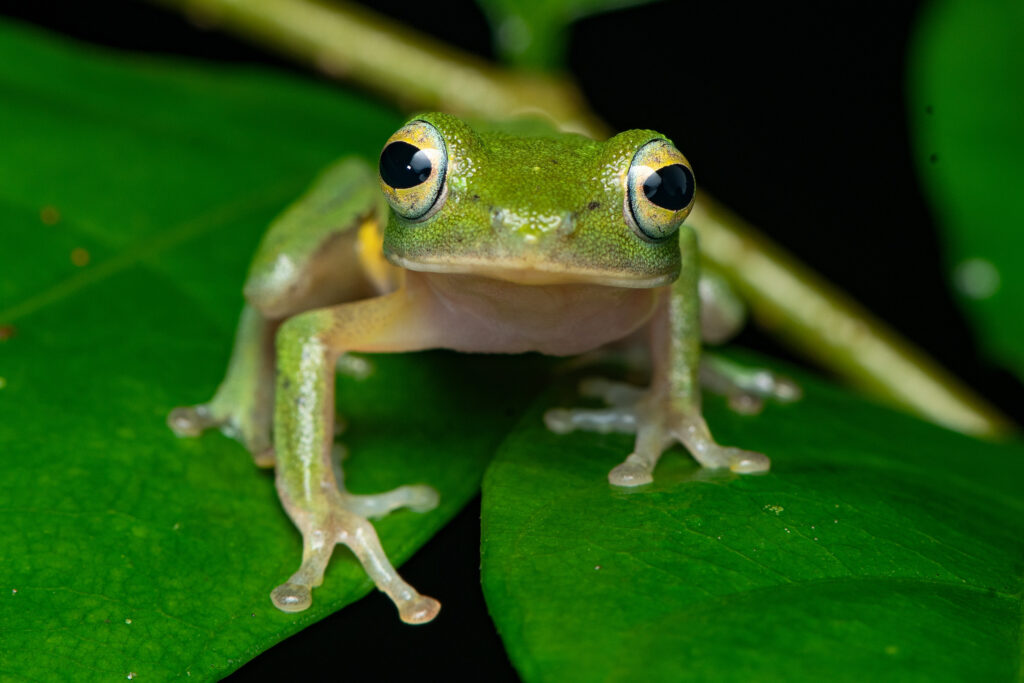
Even though scientists only discovered M. myristicapalustris in 2013, this little frog is already facing a serious threat its home is disappearing. The Myristica swamps, where it lives, are being lost fast. In many areas, these swamps aren’t protected by law, so they are quietly cleared away for farming and plantations, including rubber, palm oil, and teak trees. These changes destroy the wet, shady, and peaceful environment that this unique frog needs to survive.
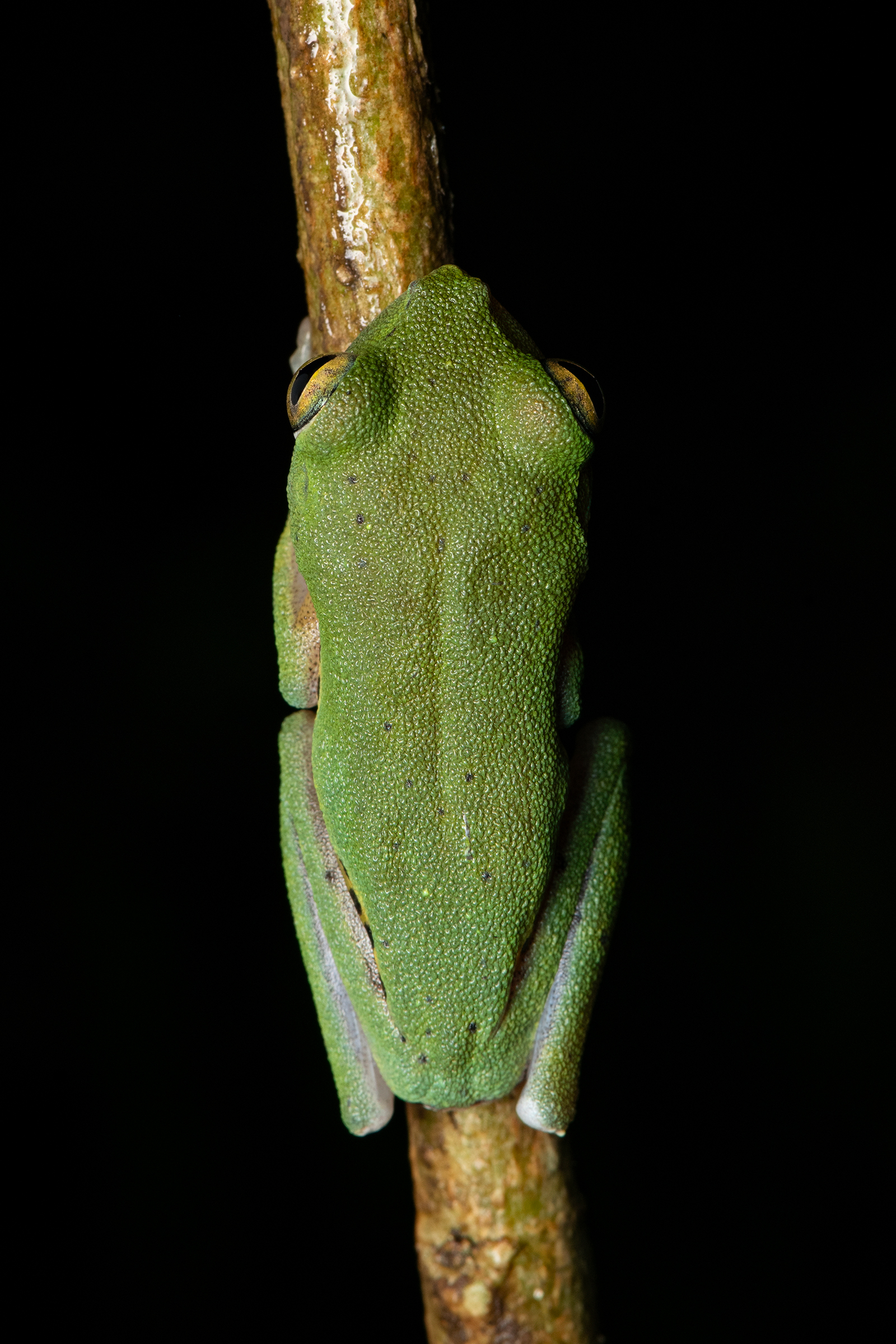
Climate change is another big threat to M. myristicapalustris. This frog depends on the pre-monsoon rains to start breeding. But now, with changing rainfall patterns, things are getting unpredictable. If the rains come too late or don’t last long enough, the frog’s eggs could dry out before they hatch. On the other hand, if the rains come too early or too heavy, the tadpoles might get washed away by fast-moving water before they are fully developed. These changes can be disastrous for a species that already lives in such a limited and fragile environment.
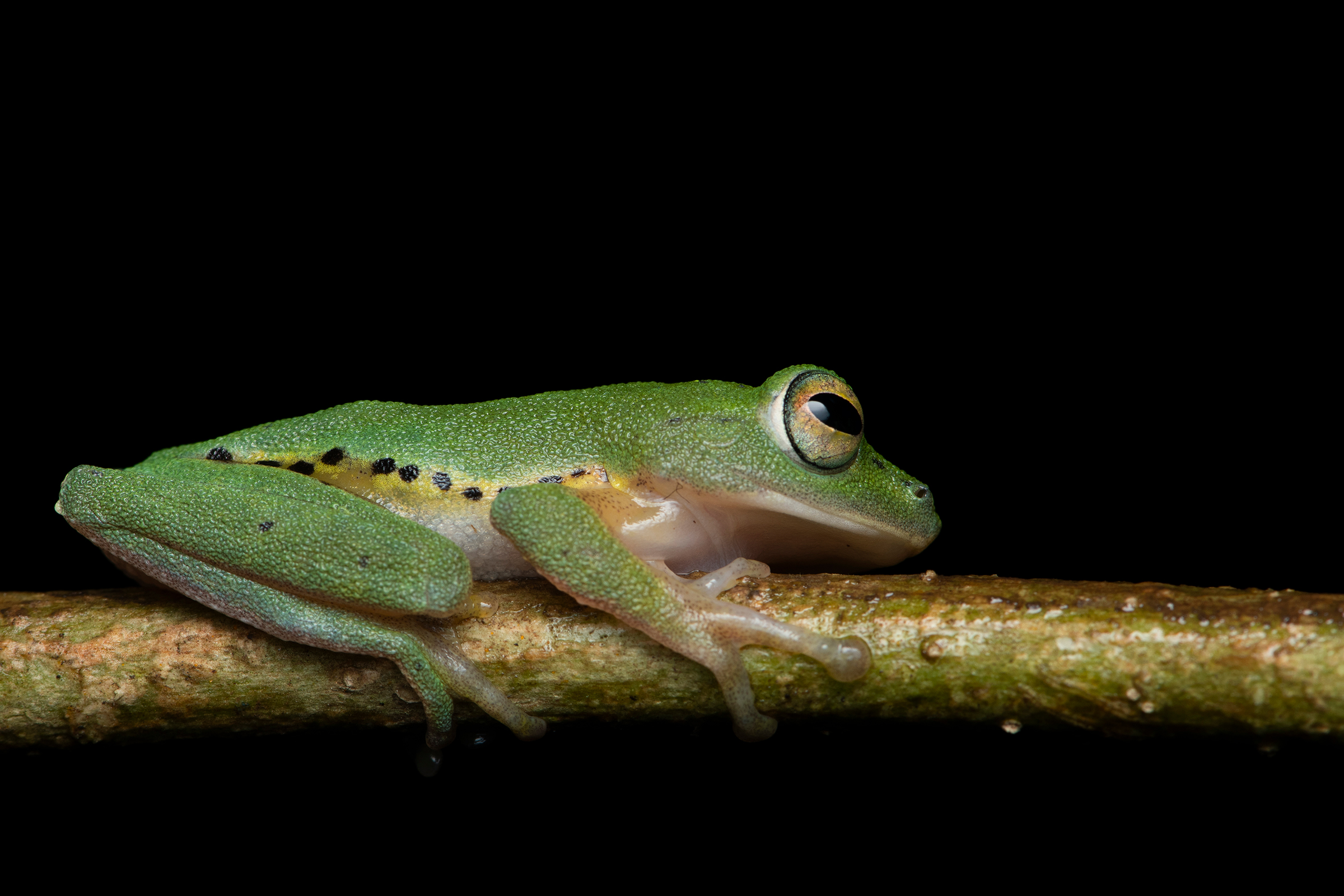
You might wonder: why care so much about one small frog? Because M. myristicapalustris is more than just a frog it is a powerful symbol of a rare and fragile ecosystem. It acts like a messenger, telling us about the health of our environment. Frogs like M. myristicapalustris are natural indicators when they begin to disappear, it is often a sign that something is going wrong with the land, the water, or the climate. Protecting this species means we are also protecting the ancient Myristica swamps, which are home to many other rare and unique species from birds and butterflies to plants that grow nowhere else on the planet.
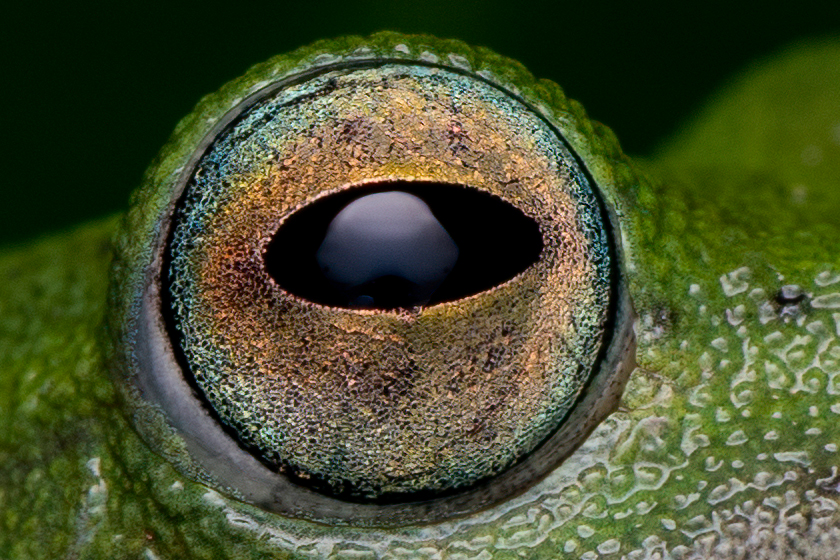
Hidden deep in the swampy forests of the Western Ghats, M. myristicapalustris lives a life few people ever see. It is small and quiet, singing only when the warm rains arrive. Named after a music icon and found in a forest that feels like another world, this frog is truly special. It reminds us that even the tiniest creatures can have stories worth telling. If this frog disappears, we don’t just lose a species we lose a part of the forest’s soul.
